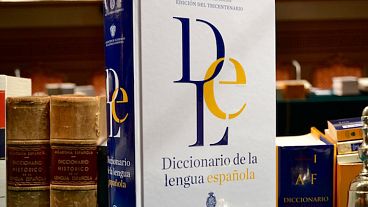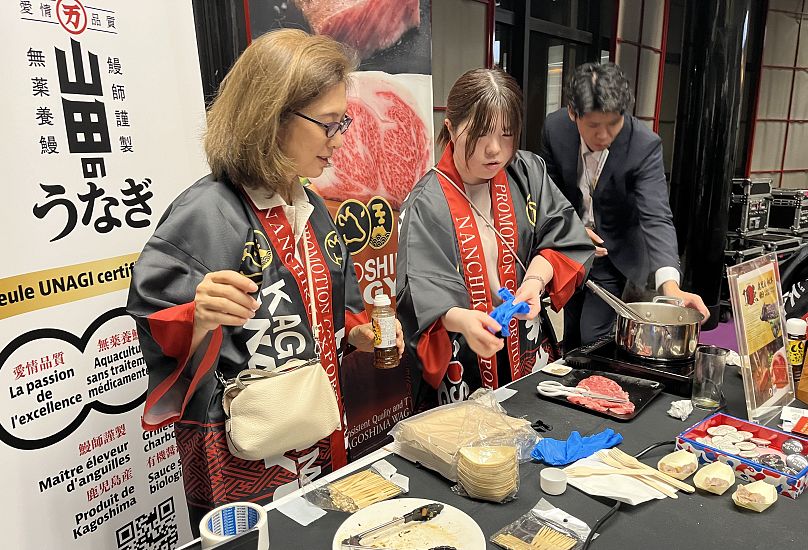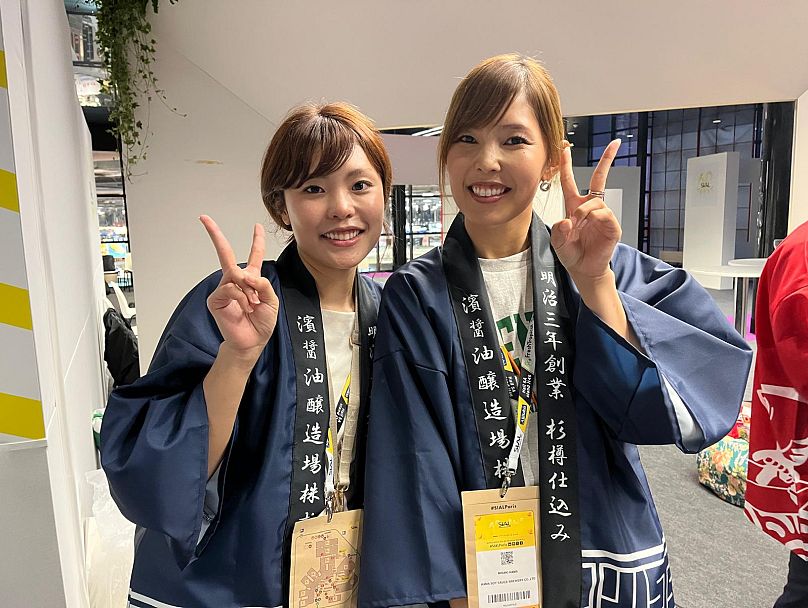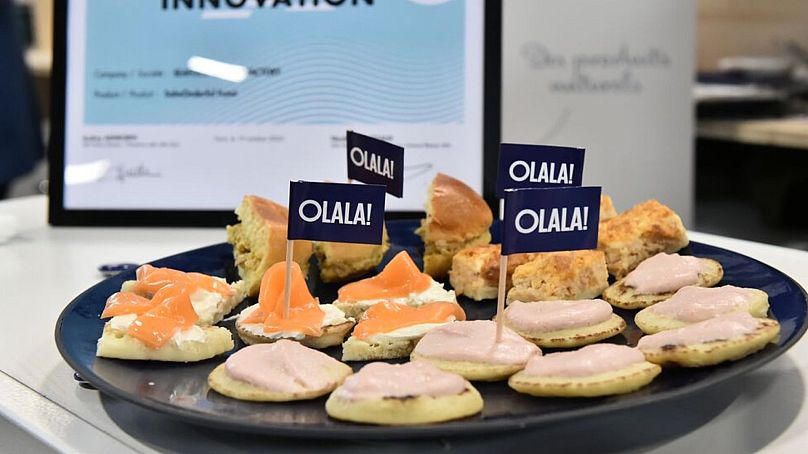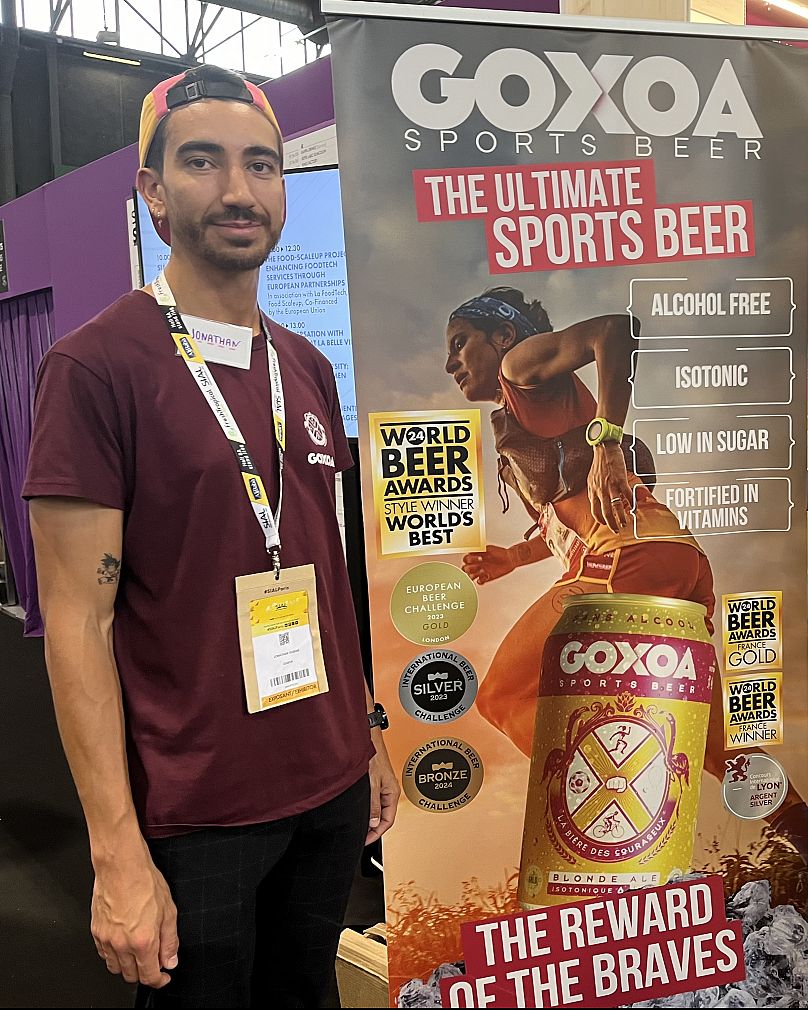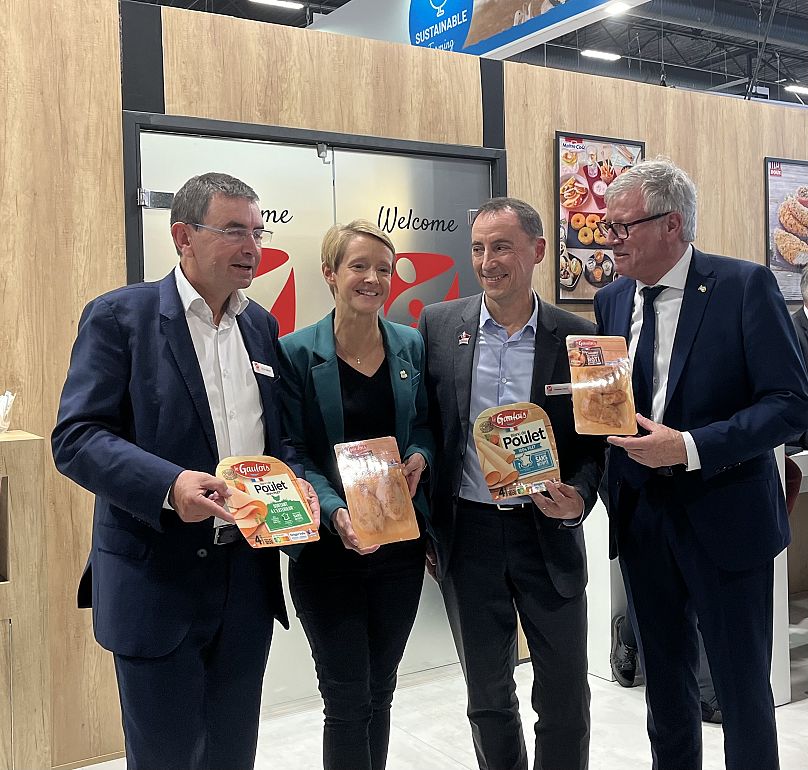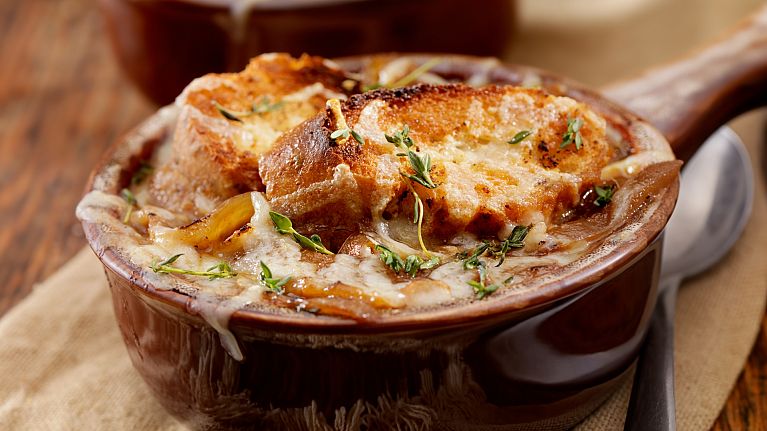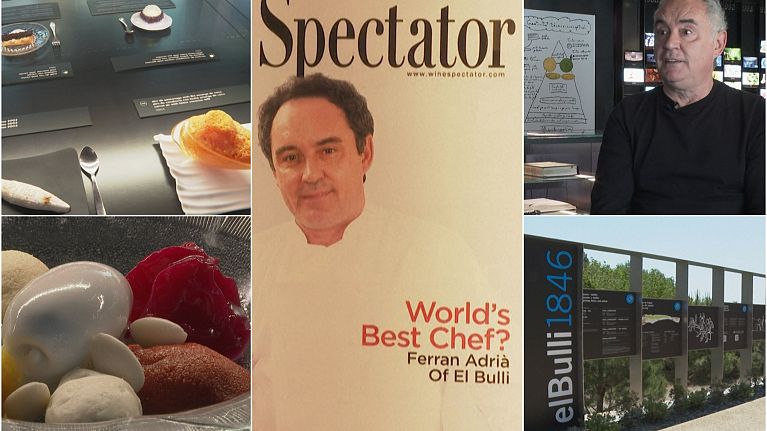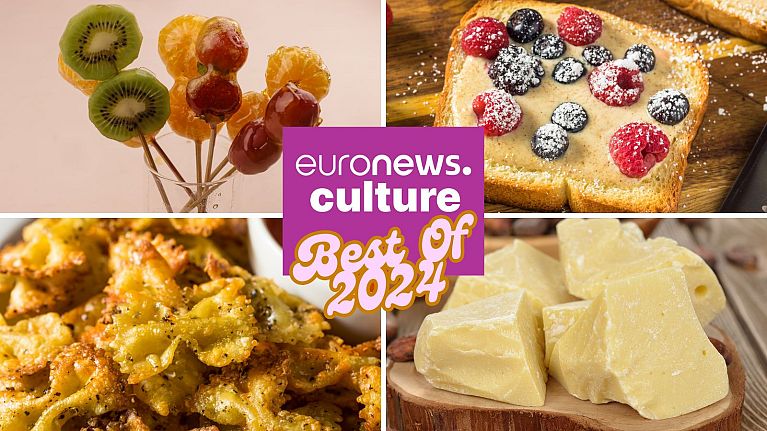You could call it the Glastonbury of the food world. Marking its 60th anniversary in Paris, the SIAL fair has played host to some 7,500 food exhibitors from 200 countries over the past week. It may be closed to the public, but this is where food trends are set.
From Italian squid to Hungarian foie gras or vegetarian tuna, there's an endless array of tastes on offer and various scents in the air throughout the 270,000 square metres of SIAL's (International Salon of Food) Parisian exhibition centre.
"The fair was created by France's Agriculture Minister in the 1960s, when the country was going through a big transformation in agriculture. There was an increase in yields, so the industry expanded and decided to sell its surpluses to companies from abroad", Nicolas Trentesaux, SIAL director tells Euronews Culture.
Today the trade exhibition is not only a key date in the world of food import-exports, but also a showcase of some of industry's most creative innovations. Although France was long viewed as the world leader in all things gourmet, at fairs like this it is clear that the balance is shifting.
Japan's hold on the European market
And one player shaking up Europe's culinary scene is Japan.
Japanese street food may be a hit with European diners, but its fine dining is what has really taken the culinary world by storm. From wagyu beef to fine seaweed, a stunning range of Japanese delicacies have grown increasingly popular with European diners.
Japan has been attending the SIAL fair for close to ten years now and it is clear that its varied offer ranging from products and produce is only growing more impressive. This success is partly down to the work of JFOODO (the Japan Food Product Overseas Promotion Center), which in recent years has become a key actor in pushing Japanese products and cuisine to global success.
"We are very pleased to see that the quality of Japanese restaurants across Europe is improving", says Norihiko Ishiguro, the Chairman and CEO of Japan's External Trade Organization.
What is clear is that the vast island country - divided into 47 Prefectures (the level below national government) - has culinary specialities flourishing from different regions.
"In Japan, we have wagyu beef which is extremely good quality because of how the fat of the meat is spread out across the animal's muscles, which makes it very tender to eat. Producers from my region - Miyagi - are showcasing delicious seaweed at this fair, you must give it a try!", insists Yoshihiro Murai, Governor of Miyagi Prefecture.
In 2024, Japan became the second country in the world to have the most Michelin starred restaurants, second only to France. Although French and Japanese cuisines may be wildly different, they are both highly technical and require quality ingredients.
"I think consumers in both countries appreciate authentic products," Asami Hama, whose family has run a soy sauce brewery for over 130 years, tells Euronews Culture. In 2013, 'Washoku' - which is Japan's history and tradition of culinary heritage - was listed as an Intangible Culinary heritage by UNESCO.
Hama's family story is just one of the many glowing tales of Washoku in action, as she continues to honour her family's soy sauce recipe - first concocted in 1897 - which entails brewing the additive-free soy sauce in cedar barrels.
For Hama, sauces lie at the heart of quality cooking, with three-star Michelin chefs in Japan already using her sauce. However, she would like to go further "my dream is to sell to three-star Michelin restaurants here in Europe and France", she says with a smile, hoping that her trip to SIAL will be worthwhile.
Ancient Japanese culinary traditions are also being embraced in Europe. Earlier this year, chef Yuichiro Akiyosh - based in Paris - became the first chef to win a Michelin star outside of Japan for his restaurant devoted to traditional Japanese tea ceremonies. The 'chakaiseki'** meal is served alongside teas and forms an integral part of the tea ceremony.
With the immense popularity of Asian restaurants and fusion food, European buyers are also on the hunt for the next hit hot sauces and sensation-sparking drinks.
"I am here to scout out new items which aren't yet on French shelves, I am interested in new Japanese sake for instance", Aymeric Lazar, head of wine for luxury Parisian grocery shop L'Epic says, before taking a swig of the drink.
In the course of the past decade, the European sake market has tripled in value, as the price per liter continues to rise. This is also due to the fine nature of the product, which has been scientifically proven to cover the smell of fish while enhancing the umami taste.
Sake could prove the perfect drink to enjoy your meal without losing any of the accompanying sensations.
Tuna and salmon... with no fish
Although many of Japan's delicacies may have been around for centuries, other products showcased at the SIAL would have been totally unimaginable to the fair's founders.
What lies at the heart of the SIAL fair today is flavours and taste, but also pushing the boundaries of food. This is precisely what French vegetarian fish brand 'OLALA Foods!', which produces vegetarian salmon and tuna is up to. It plans on opening a factory in the fishing port of Boulogne-sur-Mer, in Northern France.
"When we arrived in the town we found fishermen to be very understanding of our project. They are the first ones to see that they go fishing and come back with 50% less fish than they had ten years ago. I think the fish industry is more understanding than the meat lobby, as there is not this sense that we are 'stealing jobs'", explains Marie-Astrid Gouin, Head of Sales at OLALA!.
Pea protein is a key ingredient in the brand's product range which has seven varieties of 'fish'. "We want to convince people to buy our products through getting them to taste them and think 'this is tasty!'", adds Gouin.
A 'beer' made for the sporting best
With the boom of plant-based fish and meat products, there also comes the flood of alternative alcohols. Standing out in this competitive industry is no mean feat, but 'Goxoa', a beer brand created especially for athletes may have managed just that.
Founder Jonathan Dubois - a keen triathlete - was inspired by his passion for sports to create the product.
"The climax of my frustration came when I grabbed an alcohol-free beer after a long day at a training camp. The beer really wasn't tasty at all, I felt I wanted to have a drink to cool off and relax, but instead the beer tasted of chemicals and sugar", he tells Euronews Culture.
The drink - which won a gold medal at the European Beer Challenge - is made through a unique brewing process which naturally produces 0.3% alcohol, the same amount found in "fruit juice or a slightly ripe banana,’ asserts the triathlete.
Under French legislation, a drink containing up to 1.2% of alcohol can be labelled “alcohol-free”. But for Dubois it is not only about mimicking alcohol, as he also wants the drink to have distinct health benefits. "It contains 50% less calories than an alcoholic beer and ten times more electrolytes, as well as minerals and calories to ensure hydration."
France's push for transparency on foods
The focus of this fair may be on world food, but questions around where food comes from are more important than ever to European consumers. 71% of European shoppers report that the origin of their food products is a key decision-making factor when out shopping, according to a Eurobarometer survey.
Speaking to Euronews Culture, French Secretary of State for Consumer Affairs Laurence Garnier stated that "French people really care about not only what they eat, but also where it comes from."
The Secretary of State was at the SIAL fair to promote the new 'Origin'Info' label, launched by the French government this summer. This label is visible on packaging and lists the origins of processed foods. Up until now, the Nutri-Score label - which states the nutritional composition of foods - could be found on the packaging of many French brands.
Le Gaulois, a French meat brand, which is part of Lambert Dodard Chancereul (LDC) - one of Europe’s leading poultry groups - announced it would be introducing the label on its products.
"We have over 2,000 partner farmers across a variety of French regions, we are proud to work with them on this new launch", Patrick Gérigné, group marketing and sales director for the brand tells Euronews.
Despite this announcement, French Secretary of State for Consumer Affairs Laurence Garnier insists that France remains open to new export deals, “the French food industry is an emblem of our industrial activity. The industry represents 200 billion euros in annual sales, nearly 500,000 employees, and 19,000 companies”.
So keep your eyes peeled and your taste buds open for the next new wave of trends coming to your supermarket or restaurant table.



